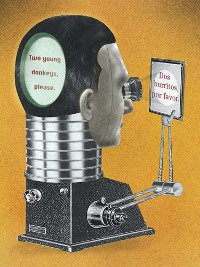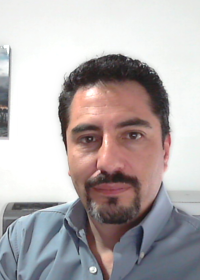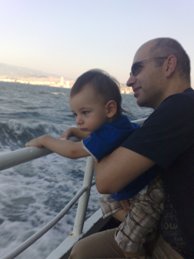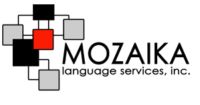| Pages sur ce sujet: [1 2] > | Poll: How do you organize your Translation Memories? Auteur du fil: ProZ.com Staff
|
|---|
This forum topic is for the discussion of the poll question "How do you organize your Translation Memories?".
View the poll results »
| | | | neilmac
Espagne
Local time: 12:59
espagnol vers anglais
+ ...
Some by client, some by subject area and for the odd occasions that I am sent documents only part of which are to be translated, I create what I call a trash memory to avoid filling my usual TMs up with monolingual text.
My main problem is remembering which is which and deciding which memory to use for each job that comes in, as I am not good at organising things.
| | | | Michael Harris 
Allemagne
Local time: 12:59
Membre (2006)
allemand vers anglais
| Always by client | May 15, 2013 |
and then by subject. I never mix customer TM´s!
| | | | Jaime Oriard 
Mexique
Local time: 05:59
Membre (2005)
anglais vers espagnol
+ ...
I prefer a single large translation memory by language pair with appropriate fields filled-in during translation. But I also have TM's organized by client (e.g. customer-owned TMs), and sometimes even by project (if I will have to deliver a TM after completing a specific project).
| | |
|
|
|
I'm disorganized which seems to work for me
| | | | | Other / It depends | May 15, 2013 |
If the customer is providing the TM, I use it for that project and that project alone. If the customer so wishes, I send them an update for the TM containing just the segments from that project. These TMs are stored in the project folder.
If I am using my own TM, I generally organise them by subject matter but there is very little subject overlap between my clients so they are de facto pretty much organised by client as well. These TM... See more If the customer is providing the TM, I use it for that project and that project alone. If the customer so wishes, I send them an update for the TM containing just the segments from that project. These TMs are stored in the project folder.
If I am using my own TM, I generally organise them by subject matter but there is very little subject overlap between my clients so they are de facto pretty much organised by client as well. These TMs are stored in my own TM folder. In Windows, I can display this folder alphabetically or by date so that covers those responses as well. ▲ Collapse
| | | | XXXphxxx (X) 
Royaume-Uni
Local time: 11:59
portugais vers anglais
+ ...
Subject, client, project and language pair.
| | | |
A single big TM for everything I've done since 1999 (possible with DVX2), plus a number of small TMs for stuff I have received from clients for specific jobs.
| | |
|
|
|
Thayenga 
Allemagne
Local time: 12:59
Membre (2009)
anglais vers allemand
+ ...
| A combination | May 15, 2013 |
By client, by language pair and by project.
| | | | Mario Chavez (X) 
Local time: 06:59
anglais vers espagnol
+ ...
| Other: by subject AND by client | May 15, 2013 |
I do health care translations for more than one client. My main tool, Deja Vu X2 Pro, allows me to use as many TMs as I want. If one client-specific TM is in use, I may use it as read only.
In the past, I used to have my TMs (Trados and Deja Vu) in separate folders by topic. Now, I find it more efficient to create (or transfer, as the case may be) my TMs in a subfolder for the project folder I'm working on.
In fact, I have two or three project folder tree templates that... See more I do health care translations for more than one client. My main tool, Deja Vu X2 Pro, allows me to use as many TMs as I want. If one client-specific TM is in use, I may use it as read only.
In the past, I used to have my TMs (Trados and Deja Vu) in separate folders by topic. Now, I find it more efficient to create (or transfer, as the case may be) my TMs in a subfolder for the project folder I'm working on.
In fact, I have two or three project folder tree templates that include these subfolders: source, target-working files, review, reference, termbase, TM, deliverables. Every time I receive an assignment, I copy the folder/subfolder structure under that client's main folder/year and rename it with the PO number of project's particular designation.
I've been doing this for years and it's an efficient way to use my translation assets.
As for the advice “This forum topic is for the discussion of the poll question "How do you organize your Translation Memories?"” at the top of the page, I guess I won't be commenting on Angelina Jolie's recent statement in the press.
[Edited at 2013-05-15 12:37 GMT]
[Edited at 2013-05-15 12:38 GMT] ▲ Collapse
| | | | EvaVer (X) 
Local time: 12:59
tchèque vers français
+ ...
Julian Holmes wrote:
I'm disorganized which seems to work for me
I am not as a general rule, but I hate CAT tools and so my TMs are completely disorganized - they are something I must use, but don't consider helpful.
| | | | 564354352 (X) 
Danemark
Local time: 12:59
danois vers anglais
+ ...
| Other - One big TM per language combination | May 15, 2013 |
Like Jaime (I think), I keep just one TM per language combination. I use the attribute fields to indicate my own order numbers, client (from a picklist) and subject (from a picklist). This makes perfect sense to me, as I can draw on my accumulated translation work for any job I do via the concordance search, while at the same time, it is dead simple to make a project-specific extract if the client wants this.
Having said that, I'm still working with Trados Suite 2007, where this is ... See more Like Jaime (I think), I keep just one TM per language combination. I use the attribute fields to indicate my own order numbers, client (from a picklist) and subject (from a picklist). This makes perfect sense to me, as I can draw on my accumulated translation work for any job I do via the concordance search, while at the same time, it is dead simple to make a project-specific extract if the client wants this.
Having said that, I'm still working with Trados Suite 2007, where this is relatively simple, whereas I have, for the moment, given up sussing out how to set up Studio 2011 with attribute fields. Those manuals are so long and annoying to find your way around!!  ▲ Collapse
| | |
|
|
|
Selcuk Akyuz 
Turquie
Local time: 14:59
anglais vers turc
+ ...
My CAT tool Déjà Vu X2 stores all information (subject, client, date, project name, file name, language pair). So I can use a single TM (Big Mama) for all projects.
| | | |
Michael Harris wrote:
I never mix customer TM´s!
By client then by project. I do a lot of financial translation in which each company's style is slightly different, so this approach is essential.
| | | | C. Mouton 
France
Local time: 12:59
Membre (2007)
anglais vers français
| by client and by project | May 15, 2013 |
I never mix various clients' TMs
but for each client, some have a special TM for each project and some use one only big TM always updated
... gives your brain things to juggle with...
I'm not usually very organized but in that matter, I have to be

| | | | | Pages sur ce sujet: [1 2] > | To report site rules violations or get help, contact a site moderator: You can also contact site staff by submitting a support request » Poll: How do you organize your Translation Memories? | Trados Business Manager Lite | Create customer quotes and invoices from within Trados Studio
Trados Business Manager Lite helps to simplify and speed up some of the daily tasks, such as invoicing and reporting, associated with running your freelance translation business.
More info » |
| | Pastey | Your smart companion app
Pastey is an innovative desktop application that bridges the gap between human expertise and artificial intelligence. With intuitive keyboard shortcuts, Pastey transforms your source text into AI-powered draft translations.
Find out more » |
|
| | | | X Sign in to your ProZ.com account... | | | | | |














